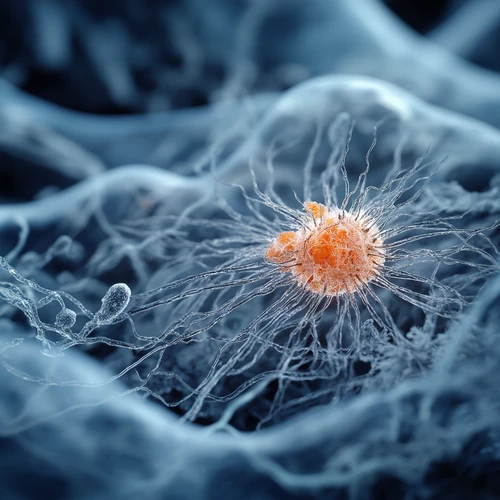A diminishing sense of smell can be one of the earliest indicators of Alzheimer's disease, even before cognitive impairments become apparent. A study by researchers at DZNE and Ludwig-Maximilians-Universität München (LMU) has provided new insights into this phenomenon, indicating that the brain's immune response may play a critical role in damaging neuronal fibers essential for smell perception.
The research, published in Nature Communications, is based on observations in both mice and humans, including analysis of brain tissue and PET scans. These findings could contribute to developing methods for early diagnosis and treatment.
Nature CommunicationsThe scientists discovered that these olfactory dysfunctions occur because immune cells called "microglia" in the brain eliminate connections between two key brain regions: the olfactory bulb and the locus coeruleus.
The olfactory bulb, situated in the forebrain, processes sensory information from scent receptors in the nose. The locus coeruleus, located in the brainstem, influences this processing through long nerve fibers that extend from neurons in the locus coeruleus to the olfactory bulb.
"The locus coeruleus regulates various physiological functions including cerebral blood flow, sleep-wake cycles, and sensory processing—particularly smell," explains Dr. Lars Paeger, a researcher at DZNE and LMU.
Our study indicates that in early Alzheimer's disease, changes occur in the nerve fibers connecting the locus coeruleus to the olfactory bulb. These alterations signal microglia to break down affected nerve fibers as they appear defective or superfluous."
The team led by Dr. Lars Paeger and Prof. Dr. Jochen Herms discovered evidence of changes in the membrane composition of affected nerve fibers: phosphatidylserine, a fatty acid typically found inside neuron membranes, had been moved to the outer surface.
"Phosphatidylserine on the outer side of cell membranes acts as an 'eat-me' signal for microglia. In the olfactory bulb, this is normally associated with synaptic pruning, which removes unnecessary or dysfunctional neuronal connections," Paeger explains.
Paeger suggests that these membrane shifts may be triggered by hyperactivity of affected neurons due to Alzheimer's disease, causing abnormal firing patterns.
The findings are based on extensive observations including studies on mice with Alzheimer's-like features, brain samples from deceased Alzheimer's patients, and PET scans of brains from individuals with Alzheimer's or mild cognitive impairment.
"Olfactory issues in Alzheimer’s and related nerve damage have been discussed for some time. However, the underlying causes were unclear until our findings pointed to an immunological mechanism, indicating such events occur even in early stages of the disease," says Jochen Herms, a research group leader at DZNE and LMU and member of the Munich-based "SyNergy" Cluster of Excellence.
Amyloid-beta antibodies have recently emerged as treatments for Alzheimer’s. For these therapies to be effective, they must be administered early in the disease's progression—precisely where current research may prove valuable.
"Our findings could enable earlier identification of at-risk patients, allowing them to undergo comprehensive testing before cognitive issues begin. This would facilitate timely intervention with amyloid-beta antibodies, boosting the likelihood of a successful response," says Herms.


